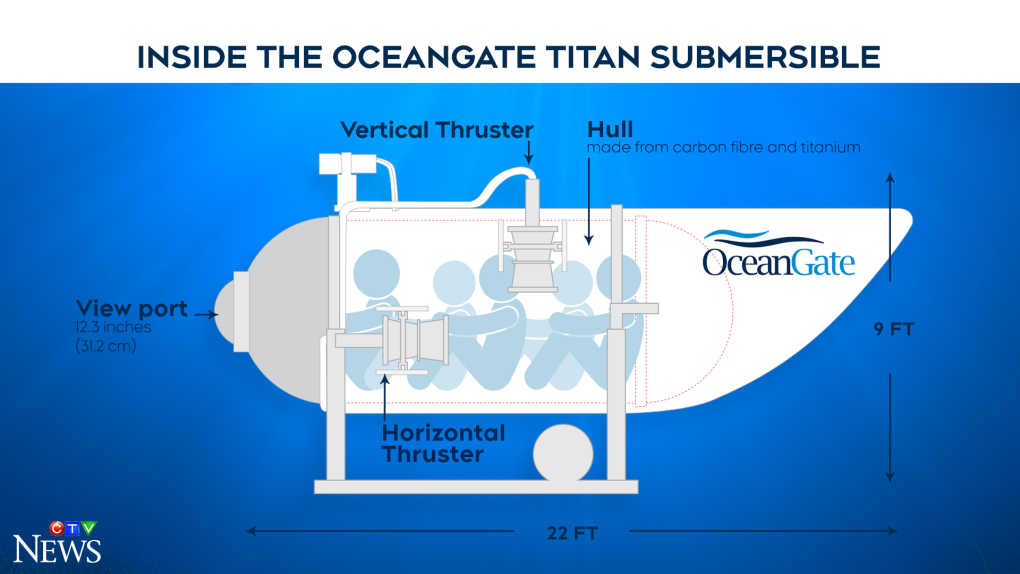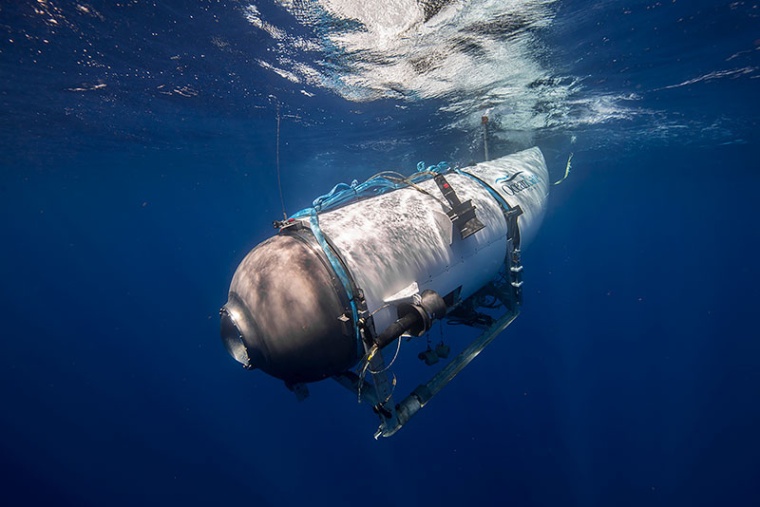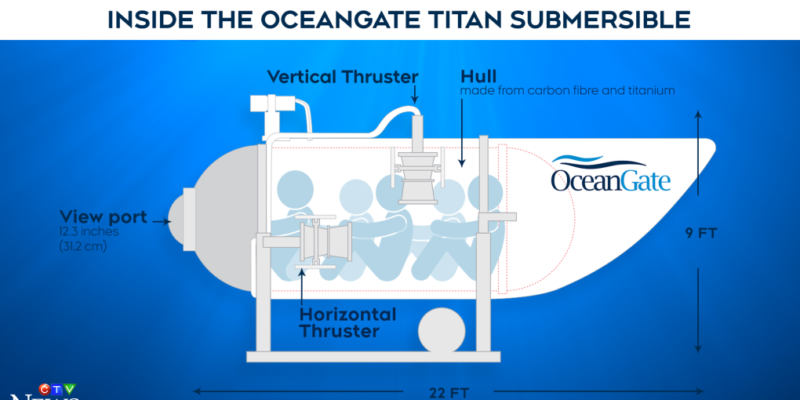
The few photos we’re sharing today as those we copied from various news sources posted yesterday and today that are readily available online regarding the loss of five lives, venturing in a small submersible, the Titan, to the bottom of the sea to the location of The Titanic, which sunk on April 15, 1912. (Many photos I tried to copy were security locked. For more photos, please search online).
Today’s story is for those who live in countries where the news of this event may be limited or for those who don’t necessarily watch or listen to world news. Surely, those in the US who do watch the news have been bombarded with a constant stream of news on TV regarding this sad story.
First, as sad as the lives of these five adventurers are, so is the loss of any of our beloved family members and friends in many types of disasters worldwide that never hit the news or draw attention to the media. All lives are precious, regardless of one’s notoriety or wealth or the cause of death. But, stories such as this become highly newsworthy based on the uniqueness of the circumstances.
I am not here to espouse any opinions on the reasons for this event. Each of us is free to formulate our own opinions. Also, with no expertise in this area, there’s no need or benefit for me to express personal views on how or why this event occurred. I am only sharing the news gleaned from a variety of news sources.

As for opinions, here is an article from James Cameron, director of the movie, The Titanic, that I find interesting, which may present a perspective based on his vast experience that is worth reading for those of you who may be interested. For those of our readers uninterested in this story, we apologize for spending an entire post on this story and will be back to our usual content tomorrow.
Here’s the article about James Cameron from the BBC article found here. (I made no corrections in this text).
“Titanic director James Cameron accuses OceanGate of cutting corners
-
Published
Hollywood film director James Cameron, who directed the 1997 movie Titanic, has told the BBC the team who built the submersible, which imploded with the loss of five lives, had “cut corners”.
OceanGate, the parent company of the Titan sub, “didn’t get certified because they knew they wouldn’t pass”.
“I was very suspect of the technology that they were using. I wouldn’t have gotten in that sub,” he said.
Cameron has completed 33 submersible dives to the Titanic wreck.
Titan was built from carbon fibre and titanium.
In 2012 Cameron used a different technology for the Deepsea Challenger submersible expedition in the Pacific, which took him down to 10,912m (35,800ft), the deepest known oceanic trench.
The Titanic wreck is 3,810m (12,500ft) down.
Cameron said that when he learned the sub had lost both its navigation and communication, he immediately suspected a disaster.
“I felt in my bones what had happened. For the sub’s electronics to fail and its communication system to fail, and its tracking transponder to fail simultaneously – sub’s gone.”
He said that on Monday, when he heard the sub had gone missing, “I immediately got on the phone to some of my contacts in the deep submersible community.
“Within about an hour, I had the following facts. They were on descent. They were at 3,500 metres (11,483ft), heading for the bottom at 3,800 metres.
“Their comms were lost, and navigation was lost – and I said instantly, you can’t lose comms and navigation together without an extreme catastrophic event or high, highly energetic catastrophic event. And the first thing that popped to mind was an implosion.”
On Thursday, an official from the US Navy told the BBC’s partner CBS News that the navy had detected “an acoustic anomaly consistent with an implosion” shortly after the Titan lost contact with the surface.
The official said the information had been relayed to the US Coast Guard team, which used it to narrow the radius of the search area.
Cameron suggested that there was a “terrible irony” in the loss of Titan and its crew, likening it to the loss of the Titanic itself back in 1912.
“We now have another wreck that is based on, unfortunately, the same principles of not heeding warnings,” he said. “OceanGate were warned.”
Cameron said that some within the deep submergence community, not including himself directly, had written a letter to OceanGate saying they believed, in his words, “you are going on a path to catastrophe”.
A letter sent to OceanGate by the Marine Technology Society (MTS) in March 2018 and obtained by the New York Times stated, “the current ‘experimental’ approach adopted by OceanGate… could result in negative outcomes (from minor to catastrophic)”.
Separately, US court documents show a former employee of OceanGate warned of potential safety problems with the vessel as far back as 2018.
The documents show that David Lochridge, the company’s director of marine operations, raised concerns in an inspection report.
But the co-founder of OceanGate insisted however that Titan had undergone rigorous testing.
Guillermo Sohnlein left the company 10 years ago and told the BBC that the 14-year development programme had been “very robust”.
“Any expert who weighs in on this, including Mr Cameron, will also admit that they were not there for the sub’s design, for the sub’s engineering, the sub, the building of the sub and certainly not for the rigorous test programme that the sub went through.”
The Titan sub was not certified, but then this is not mandatory.
In a blog post about it in 2019, the company said the way that Titan had been designed fell outside the accepted system – but it “does not mean that OceanGate does not meet standards where they apply”.
It added that the classification agencies “slowed down innovation… bringing an outside entity up to speed on every innovation before it is put into real-world testing is anathema to rapid innovation”.
Cameron told BBC News the past week had “felt like a prolonged and nightmarish charade where people are running around talking about banging noises and talking about oxygen and all this other stuff”.
“I knew that sub was sitting exactly underneath its last known depth and position. That’s exactly where they found it,” he continued.
He said anyone venturing to the Titanic wreck should be fully aware of the risks, as “it’s a very dangerous site”.
“Agree to those risks, but don’t be in a situation where you haven’t been told about the risks of the actual platform that you’re diving in there.
“In the 21st Century, there shouldn’t be any risks. We’ve managed to make it through 60 years, from 1960 until today, 63 years without a fatality… So, you know, one of the saddest aspects of this is how preventable it really was.”
No doubt, this event is very sad and terrifying when thinking of the fear the occupants of the Titan must have experienced if they were alive after the malfunction of the vessel.
For many, taking risks for the sake of highly charged adventures poses the potential for injury and loss of life. To a degree, we appreciate and understand the desire for some individuals to put their lives at risk for such an adventure. Although we’ve never taken such a massive risk as this, we have embarked on certain adventures that elicit an element of fear coupled with excitement that truly can be a life-changing event, adding to one’s personal growth.
We’ll be back with more tomorrow, with friends visiting today.
Be well.
Photo from ten years ago today, June 23, 2013:


